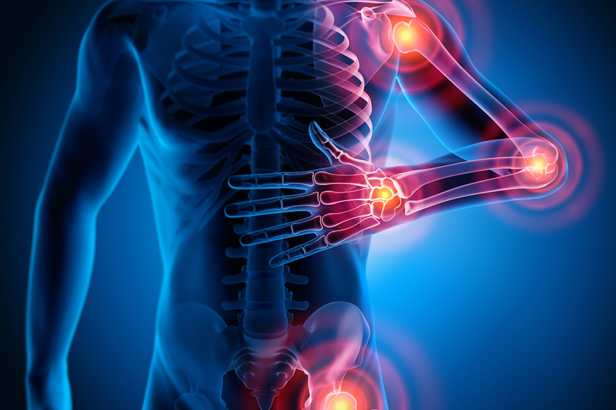
The human body has 206 bones in total. When we are born, we actually have 300 bones. As babies grow up, some bones fuse together so that by the time they are fully grown, they have lost 94 bones! Bones are connected to each other by ligaments. These are fibrous, connective tissues that keep our bones connected while allowing us to be flexible. Many bones enclose important cavities where organs or fluids reside.

Many bones also have bone marrow on the inside. Bone marrow is kind of like a thick jelly. Its job is to make blood cells. Every second, our bone marrow makes about two million red blood cells! Not all bones are shaped like the ones most people imagine.

Your skull is also made of bones. The skull is made of different bones joined together. Unlike most joints in the body, the joints in your skull do not move. Without bones, we would have no protection for our organs. It's amazing to think about how many bones there are working hard inside our bodies.

As you sit in your seat and read the words on this screen, your body is working hard. When you finish your lesson and walk out of the classroom, your body is still working. When you eat your lunch or have a conversation with your friend, your body is working non-stop. Most of us don't stop to think about just how much the human body does every second of the day! Without muscles, our bodies would be immovable.

Most of your muscles work with your skeleton to allow you to move. These muscles are called skeletal muscles. Some of our muscles are called smooth muscles. These muscles are involuntary. That means that you can't control these muscles. The muscles in your arms and legs, for example, are voluntary. We are conscious of these movements.

Involuntary muscles move on their own. They are the kinds of muscles that do work behind the scenes to keep you living! The smooth muscles in your stomach contract and relax to help food move through your body. The cardiac muscles in your heart also contract and relax; they do so to help blood move through your body.

All your muscles work pretty hard. The muscles around the eyes work substantially hard. In order to help the eyes focus and move, the muscles in your eyes move around 100,000 times a day! If you were to give your leg muscles the same kind of exercise, you would need to walk 80 km every day! That would be exhausting indeed, especially since you use about 200 muscles to take one step.

Overusing or underusing your muscles can lead to injury. Serious injuries require intense rehabilitation to recover. This involves treatments like physiotherapy to get the muscles used to working again.

Not all movements use muscles. We move our fingers a lot every day, but fingers actually have no muscles in them. Our fingers are made of bones, which are attached to muscles in the forearm by tendons. These tendons are what allow our fingers to move.

Did you know that your tongue is made up of muscles? Your tongue is actually the strongest muscle in the body in proportion to its size! Your face is also full of muscles. In fact, it takes 17 muscles to smile and 43 to frown. So the next time you're feeling like frowning, give your muscles a break and go for a smile instead!